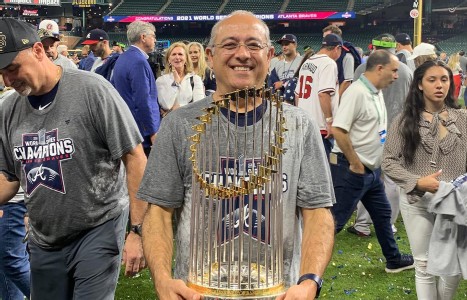On Jan. 24 1978, the New Zealand governor-general referred to a Commission of Inquiry an investigation to determine the desirability of providing for reimbursement of chiropractic benefits under the New Zealand Social Security Act and the New Zealand Accident Compensation Act. The commision's findings would impact chiropractic worldwide for decades to come.
Chiropractic Care at the 17th Maccabiah Games
Maccabiah 17, as it is called in Hebrew, was held at various sites throughout Israel July 10-21, 2005. It was the largest and most successful of all the Jewish Olympics, with close to 7,000 participants from nearly 50 countries!
The games were a landmark event for the chiropractic profession in Israel, since this is the first time the Israeli Chiropractic Society was invited to provide treatment as part of the health care team. The significance of this should be noted, for it constitutes acknowledgement of our ability to contribute a valuable and highly sought-after form of health care. The following is a report that summarizes both the extent of our participation and the types of problems encountered. The data collected and presented was based on six criteria: the number of hours worked; the number of treatments given; the sporting event worked; the countries of the recipients; typical/unusual conditions seen; and medal winners treated.
The totals presented below were reported by the various treating chiropractors:
- Treatment was provided by 15 of 19 volunteer chiropractors.
- The number of treatments administered was just under 400 (388 reported).
- Eleven sporting venues were serviced. The doctors were allowed to pick either based on geography, i.e., what was located nearby, or based on their interest in a particular sport. This included golf, tennis, beach volleyball, indoor volleyball, karate, basketball, triathlon, rugby, track and field, swimming, and squash.
- One of the medical organizers from Maccabi asked that we place people both in the field and at the main medical treatment areas. Hence, two central medical triage sites also were serviced (Kfar Maccabiah in Ramat Gan, and the Hyatt Hotel in Jerusalem).
- The athletes treated came from Israel, the U.S., Canada, Great Britain, South Africa, Hungary, Mexico, Venezuela, Holland, Jamaica, Cyprus, Moldavia, Greece, France, Brazil, and Serbia.
- The injuries seen and treated tended to be correlated to the type of sport. For example, impact sports such as rugby or martial arts were more traumatically induced. Sports such as swimming or track presented more as repetitive motion leading to subluxation and myospasm.
- A large portion of the treating chiropractors did not document fully as requested. This was most noticeable with tracking the amount of time worked. Ten of 15 doctors reported working a combined total of 110 hours.
We attempted to have a uniform method of data gathering, relying on the history/treatment forms developed by the Federation Internationale de Chiropratique Sportive (FICS). Compliance in this regard was faulty either due to doctors forgetting to bring the forms to the event, or in some instances, the sheer volume of athletes became so large that there was simply inadequate time to get the details. (One of the doctors reported that an entire team of 20 athletes lined up for care!)
Because this was a seminal event, a number of problems arose at the venue sites (both logistically and practically). We encountered problems with letting players and coaches know we were available for providing treatment. We also had a couple of episodes of equipment failure, i.e., broken tables. Some of our volunteers in the end gave no treatment at all, due to unannounced venue changes, equipment failure, or an inability to communicate their presence or purpose.
In conclusion, I would say that based on the number of treatments administered (despite there being no advance notice to athletes or coaches that we were participating, with only verbal announcements at the venues), it is readily apparent that there is a large demand for our services. The athletes and coaches do not care about medical politics or professional health care rivalries; they simply are interested in what can put them back in play as rapidly as possible and optimize their performances - naturally.
Richard Gakner, DC, CCSP
Chiropractic Coordinator, 17th Maccabiah Games


